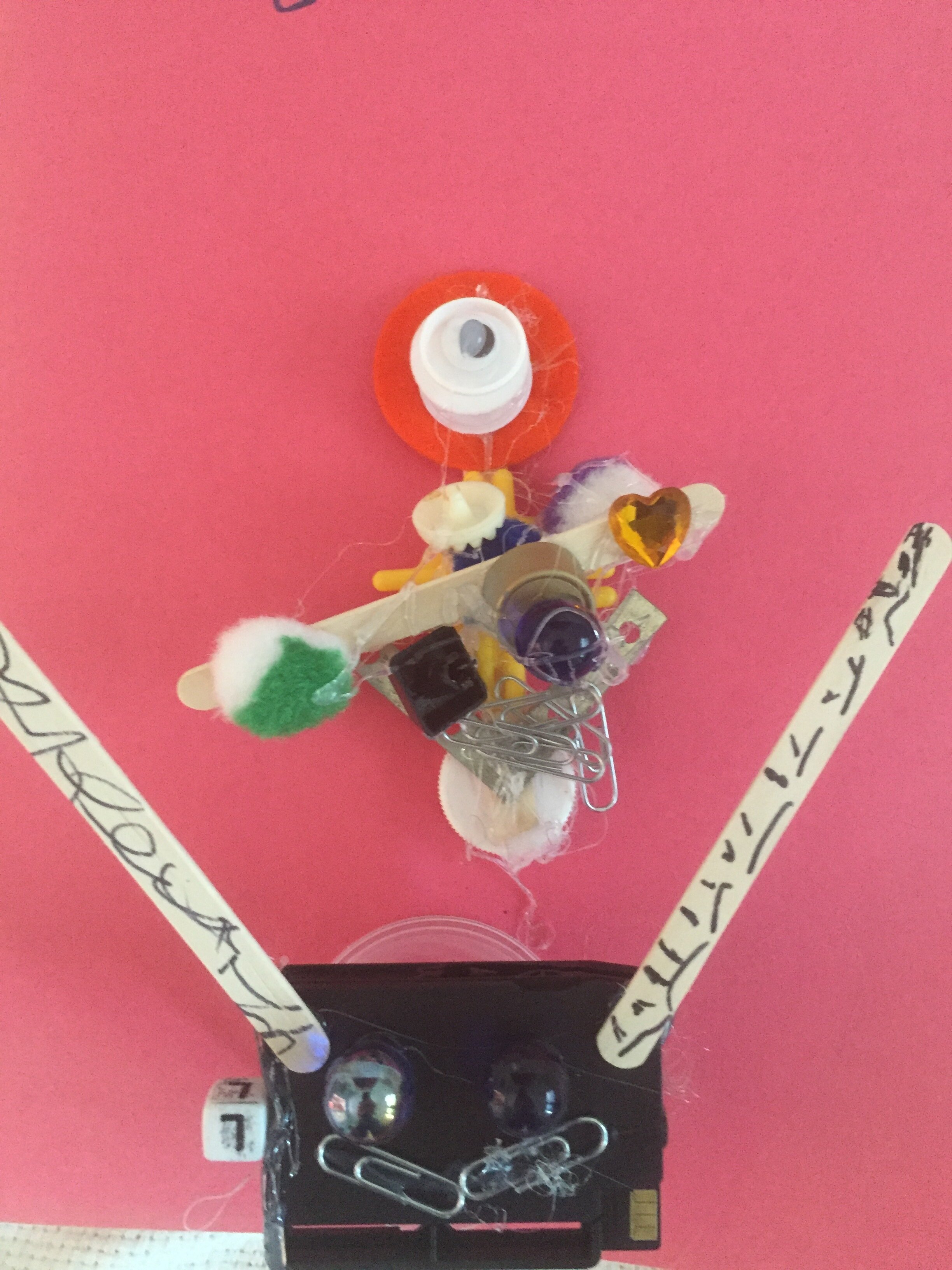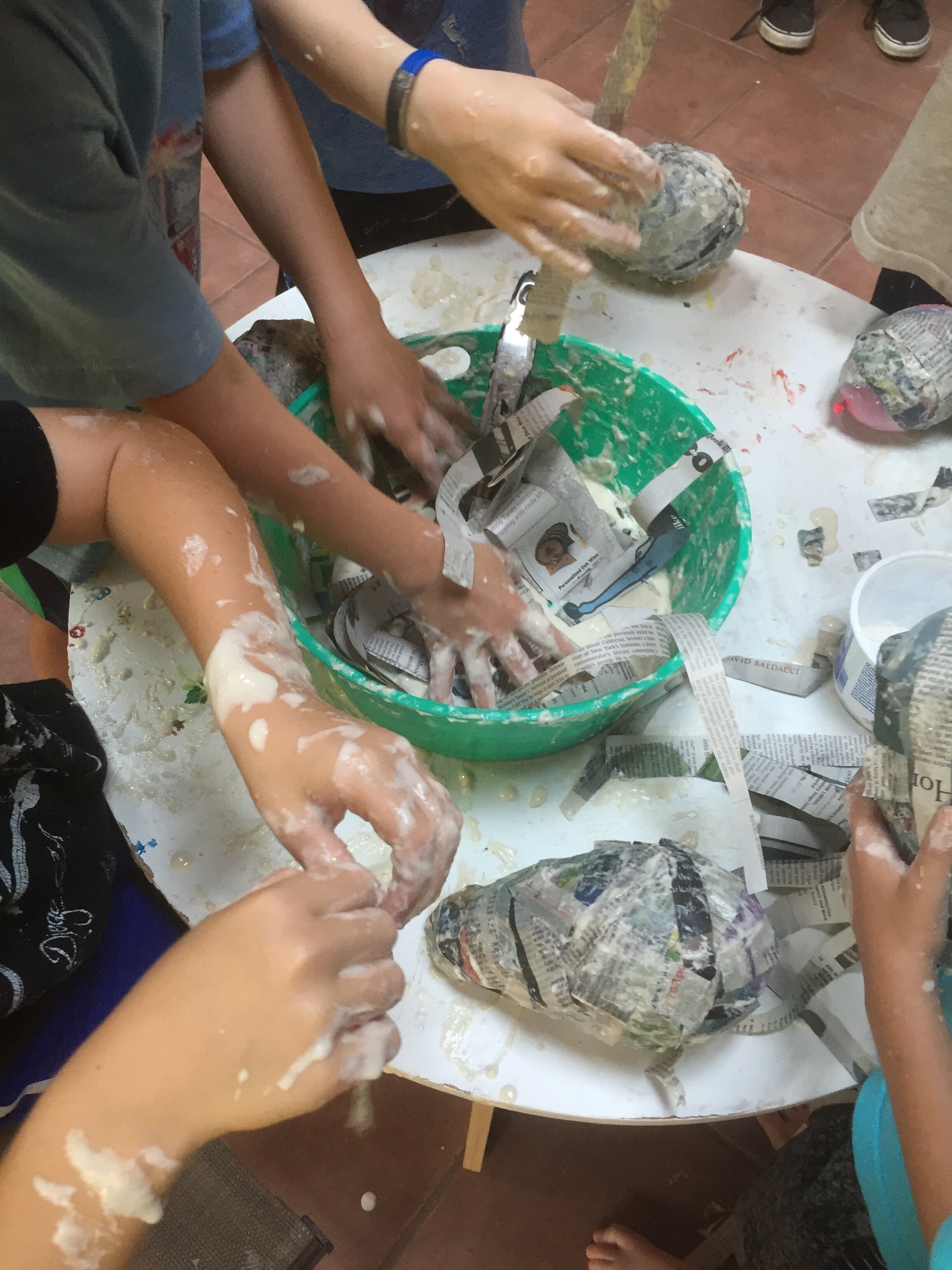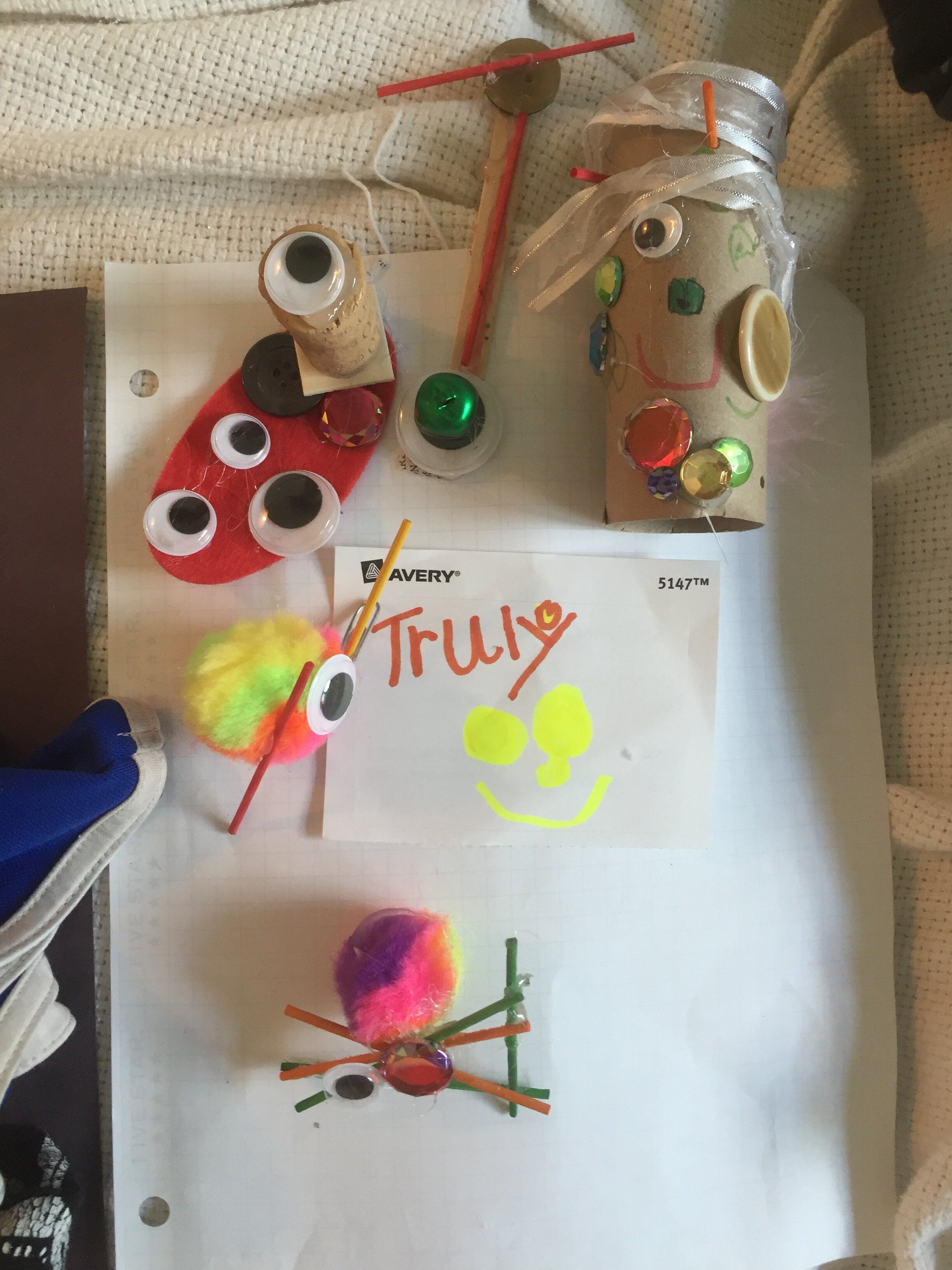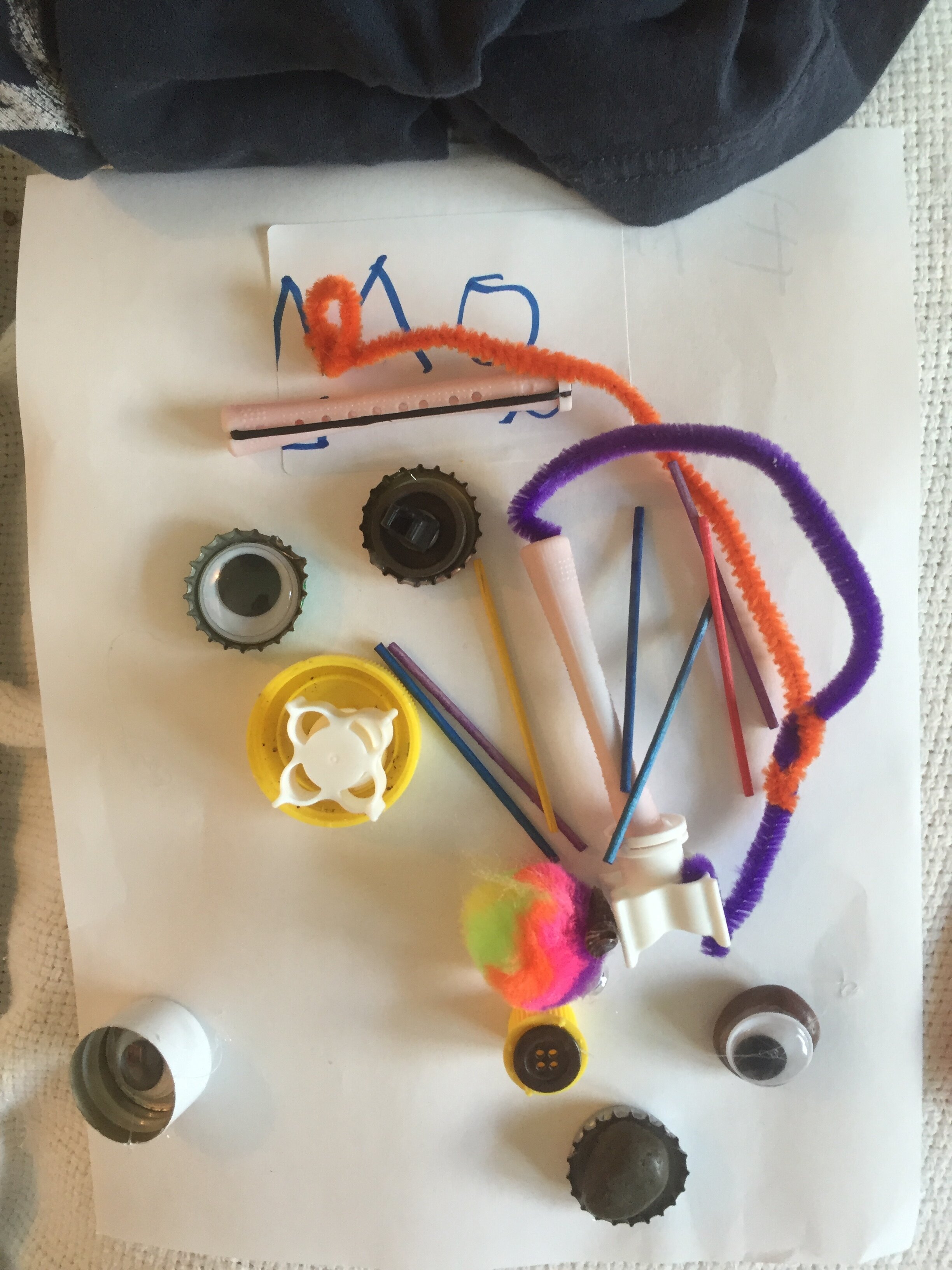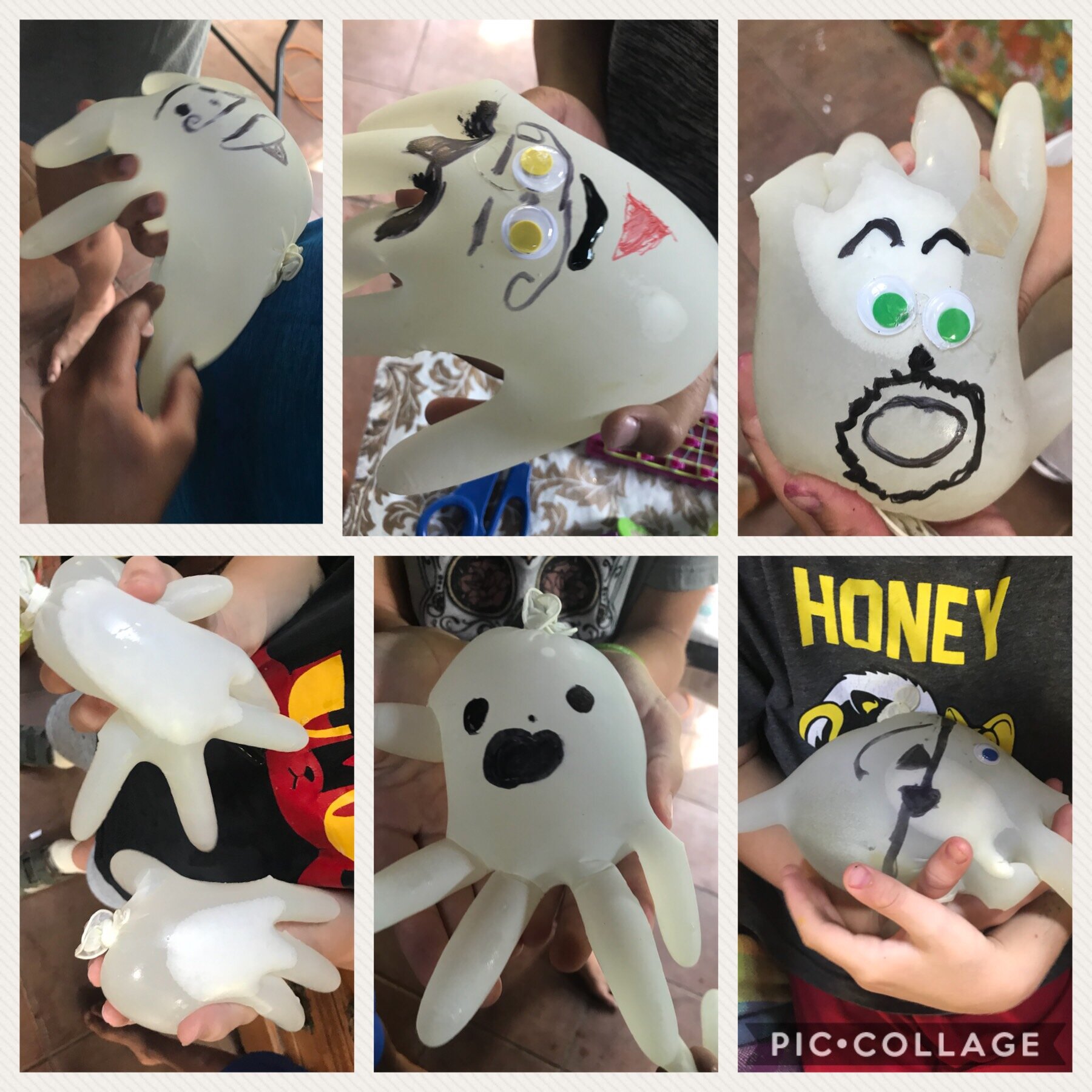Ideas to Use
How it Started
Why Messy Art? As a parent of two young children, I noticed that my fellow parents loved seeing their kids do messy activities when playing at our house--and that they’d prefer not to have the mess in their own home.
Some other patterns I saw and brought into camp were:
Children took pride in preparing food, but didn’t have many opportunities to do so.
After coming from Brooklyn where we walked miles each day, the car culture of Austin struck me as restrictive to child movement.
Certain hands-on activities like using a hammer and nails, a needle and thread, a sewing machine, and a hot glue gun were being crowded out by other toys or seen as too risky for kids to use.
I put messy materials, food-making, movement, and “risky” play together, hired a neighborhood teenager to help out, and Messy Art Camp was born! It grew each year to the point I had waiting lists starting in January, for June camps. My plan originally was to stop at age 8, but the kids kept coming back at ages 9 and 10. My youngest campers were 4, with an occasional 3 year old coming along with a sibling. I had 2-3 teen helpers each week, depending on the size of the camp. There was a long line of interested helpers that I didn’t have enough work for, though I wish I had the energy to do more and hire more.
How it Works
Each week I choose a different theme, which I connect to the stories, snack, and gross motor games. Some past themes are: Anansi the Spider, Birds, Greek Myths, and Irish Legends. The children create their own meaning and connections throughout the day.
Each day has the same arc, with small changes each day. For example, the base materials for loose parts stay the same, but I add a couple of new ones each day. I offer a different welcome project, gross motor game, and potion each day of the week, but at roughly the same time in the schedule for continuity.
If you’re doing this at home, you can pick and choose how many things to do each day. You can connect by theme, or not! I like documenting through pictures and as a scribe—typing as students describe their work.
Painting with feet is fun!
What Kids Say
“I think it’s fun and also it lets the kids show their creative side so they can make whatever they want and they can get messy. It is tiring for the counselors but I do enjoy coming here and watching the kids and we do a lot of weird and fun stuff!”
“Messy Art camp is fun and messy. People like to make things—anything they want. Woden houses, swords, and paintings. I like it!”
“I like building stuff, like the circuit. My favorite parts to build was the cardboard fort. I liked that picture over there!”
“Messy art is like a camp that you can do lots of art, like you can basically make whatever you want. And it’s really fun and everyone is really nice. The only thing is that it could be a little longer than just half day. And it could have more than two weeks. Some of the things I’ve made are bracelets, painted wood, a door bell, I did this thing with nails, I made a blue ball and I made snacks based on books. ”
“ Messy Art camp is fun. You can basically make anything, like spider webs, houses made out of boxes, and drawing on paper. I recommend it to other kids.
”
“Messy Art Camp is fun. A lot of people here are nice and today I’m making rubber bands and I make other stuff that doesn’t stick to hot glue. I recommend it to other kids because you can make a lot of stuff and you might make something that’s really awesome!”



